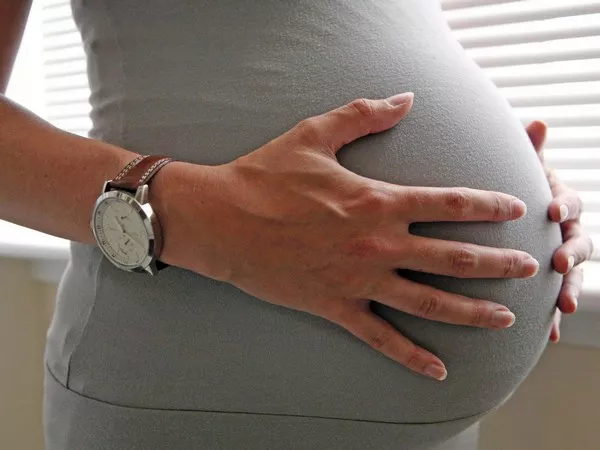Low blood pressure, or hypotension, is a common occurrence in the postpartum period, affecting many women after giving birth. While childbirth is a miraculous and transformative experience, it can also lead to various physiological changes, including fluctuations in blood pressure. Understanding the causes of low blood pressure after delivery is essential for healthcare providers and new mothers alike to ensure optimal postpartum care and recovery. In this comprehensive guide, we delve into the factors contributing to postpartum hypotension, explore its symptoms and complications, and discuss strategies for management and prevention.
Physiological Changes During and After Childbirth
Hormonal Shifts:
Childbirth triggers significant hormonal changes in a woman’s body, including fluctuations in estrogen, progesterone, and oxytocin levels. These hormonal shifts play a crucial role in uterine contractions, lactation initiation, and postpartum recovery but can also influence cardiovascular function and blood pressure regulation.
Blood Volume Redistribution:
During pregnancy, the body undergoes adaptations to support the growing fetus, including an increase in blood volume and cardiac output. Following delivery, blood volume decreases as the uterus contracts and expels the placenta. This rapid shift in blood volume can affect vascular resistance and contribute to changes in blood pressure.
Autonomic Nervous System Regulation:
The autonomic nervous system, which controls involuntary bodily functions, undergoes alterations during labor and delivery. Changes in sympathetic and parasympathetic activity can impact vascular tone and heart rate, potentially leading to fluctuations in blood pressure postpartum.
Causes of Postpartum Hypotension
1. Hypovolemia:
One of the primary causes of low blood pressure after giving birth is hypovolemia, or decreased blood volume. Blood loss during labor and delivery, whether from vaginal tears, episiotomies, or cesarean sections, can result in hypovolemic shock, leading to a drop in blood pressure.
2. Orthostatic Hypotension:
Orthostatic hypotension, also known as postural hypotension, occurs when a person’s blood pressure drops significantly upon standing up from a seated or lying position. This phenomenon is common in the postpartum period due to changes in blood volume, autonomic regulation, and fluid shifts.
3. Anesthesia Effects:
Women who receive epidural or spinal anesthesia during labor and delivery may experience temporary hypotension as the effects of the anesthesia wear off. Regional anesthesia techniques can cause vasodilation and reduce sympathetic nervous system activity, leading to a drop in blood pressure.
4. Dehydration and Fluid Loss:
Inadequate fluid intake or excessive fluid loss, such as from sweating, breastfeeding, or postpartum diuresis, can contribute to dehydration and low blood pressure. Women are often encouraged to stay hydrated during the postpartum period to prevent complications associated with fluid imbalance.
Symptoms and Complications of Postpartum Hypotension
Symptoms:
The symptoms of low blood pressure after giving birth may vary depending on the underlying cause and severity of the condition. Common symptoms include dizziness, lightheadedness, fainting, blurred vision, fatigue, nausea, and pale skin. Some women may also experience palpitations or chest discomfort.
Complications:
While postpartum hypotension is often transient and self-limiting, severe or prolonged cases can lead to complications such as maternal syncope (fainting), falls, and impaired maternal-infant bonding. In rare instances, profound hypotension may result in hypoxic-ischemic injury or death if not promptly addressed.
Management and Prevention Strategies
Fluid Replacement Therapy:
In cases of hypovolemia or dehydration, intravenous fluid therapy may be necessary to restore blood volume and improve blood pressure. Healthcare providers closely monitor fluid balance and electrolyte levels to prevent complications such as fluid overload or electrolyte imbalances.
Orthostatic Maneuvers:
Encouraging postpartum women to perform gradual and controlled movements when changing positions can help minimize the risk of orthostatic hypotension. Simple maneuvers such as slowly sitting up from lying down or standing up from a seated position can prevent sudden drops in blood pressure.
Pharmacological Interventions:
In select cases, healthcare providers may prescribe medications to manage postpartum hypotension, such as vasopressors or inotropic agents. These medications work by increasing vascular tone and cardiac contractility, thereby raising blood pressure to a safer range.
Optimizing Postpartum Care:
Comprehensive postpartum care, including regular vital sign assessments, monitoring for signs of hypotension, and providing education on hydration and nutrition, is essential for preventing and managing low blood pressure after giving birth. Close communication between healthcare providers and new mothers facilitates early detection and intervention for any complications.
See Also: 6 Types of Foods You Shouldn’t Eat While Pregnant
Conclusion:
Low blood pressure is a common occurrence in the postpartum period, often resulting from physiological changes, hypovolemia, anesthesia effects, or dehydration. While postpartum hypotension is usually transient and self-limiting, it can cause discomfort and increase the risk of complications if left unaddressed. By understanding the causes, symptoms, and management strategies for postpartum hypotension, healthcare providers and new mothers can work together to promote optimal recovery and well-being in the postpartum period. Early recognition and appropriate intervention are key to ensuring a safe and healthy transition to motherhood for women worldwide.


